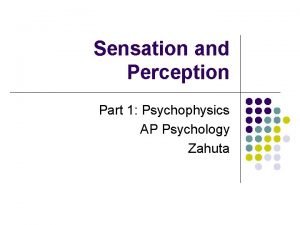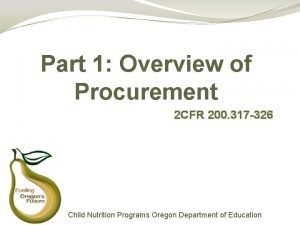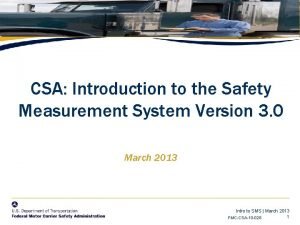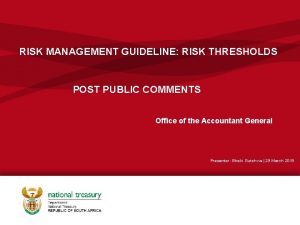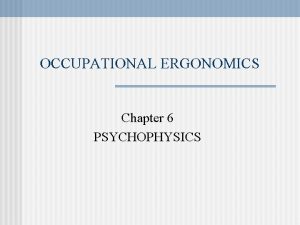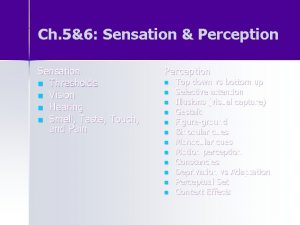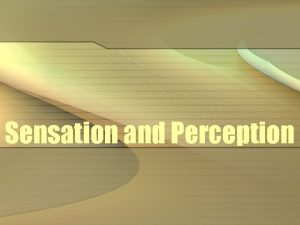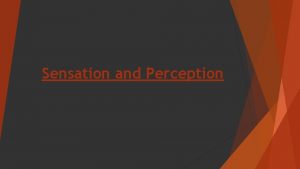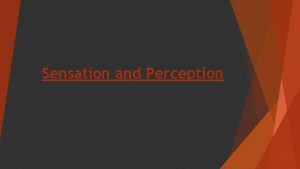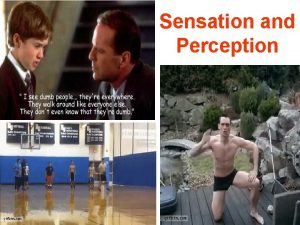Sensation psychophysics Transduction Thresholds and Coding Do Now










- Slides: 10

Sensation (psychophysics) Transduction, Thresholds, and Coding

Do Now • Answer the following question: – If a tree falls in a forest and no one is around to hear it, does it make a sound?

Sensation: the process by which physical energy is transduced into neural responses Psychophysics: the study of the relationship between physical stimuli and the mental or physical experiences the stimuli evoke Key ideas: transduction and coding

Three steps of sensory processing: Physical stimulus Physiological response Sensory or psychological experience • Physical stimulus: light energy, sound energy, pressure, chemical (taste), etc • Physiological response: receptor potential in the sensory receptor which causes a change in the release of NT which modifies the firing rate in neurons with which these cells form synapses and so on until the information reaches the brain • Sensory experience: see color, taste bitter, hear low tone

Touch as Example • Receptor field – Activate/deactivate • Excited in central area • Inhibited in surrounding area • • Sensory neuron Brainstem Contralateral thalamus Primary sensory cortex (raw data) – Topographical parts relative to body – Complexity and integration on ascent • Posterior parietal cortex – Integration with other senses • EX: cats only respond to site and sound of birds

Thresholds • What is a sensation? – Just the stimulus present? – Just the mind reaction? – Behavioral definition: absolute threshold where stimuli is identified 50% of the time • Attention key • Signal detection theory – Response bias » Need for multiple trials • Sensory adaptation • Just noticeable difference (JND) • 1/30 for weight, 1/100 for length • Weber’s law • Amounted added causing JND is dependent on the amount of a stimulus already present • the jnd for a stimulus magnitude is a constant proportion of the magnitude of the original stimulus

Sensory Transduction • Transformation of one form of energy into another • Sensory events are transduced or transferred into changes in the cell’s membrane potential • Example: Light energy is transformed by an electrical chemical interaction in the sensory receptor into a receptor potential

Quantitative Dimension – Amount or intensity of energy present • Dull or bright light, light or strong pressure, loud or soft tone, strong or weak bitter taste – Rate of firing and number of neurons – Different neurons for different intensities • Neuron 1: low threshold for small distinctions • Neuron 2: medium threshold • Neuron 3: accurate for strong stimulus Qualitative dimension – Precise kind of energy present • Red or yellow light, sweet or bitter taste, high or low pitched tone – Different receptor neurons are differentially sensitive to different kinds of energy • Quantitative: magnitude • Qualitative: relative firing Coding

Processing • Sense-specific Processing center, sensors, and pathways • Convergence • As information proceeds up the brain, it is integrated and more complex

Revisit Do Now • Did the tree make a sound? – What might psychologists say?



